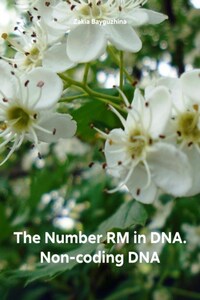One of the greatest mysteries of nature, on which more than one generation of scientists has been working, is connected with man himself. We all desire something, think, strive to understand the world around us, including ourselves; an inquisitive mind does not allow us to calm down for a minute and makes us dig down to the very essence of things. Who are we in this endless ocean of the Universe? Where are our origins, our beginnings? Why do we, human beings, dominate our planet, sometimes catastrophically changing its appearance?
The living system, to which man belongs, is a delightful creation of nature. Life is a real miracle; perhaps this is the only way to explain everything that surrounds us. A nightingale singing; a wedge of cranes flying away to the south in autumn; giant whales in the vastness of the oceans, swimming somewhere to places only they know; impenetrable jungle with many outlandish animals and insects living in dense thickets – this is all our planet. But how did life begin? How does it work? Until now, this question has remained open, but much suggests that the birth of life was possible on Earth. Nature is wise, and she herself has found simple and clever solutions for the living to become such. Life is the most mysterious phenomenon that exists on our planet.
At the molecular level, all living things are represented by molecules, an association of chemical compounds. How, from a multitude of substances, to find that main one, that queen, which determines life? It turns out that there are two of them – DNA and RNA (in some viruses). Information about the structure of proteins is encoded in specific nucleotide sequences. We are most interested in the first; the most famous, amazing in its simplicity and still keeping its molecule secret – DNA.
The disclosure of this secret will make it possible to predict the development of many diseases and to outline ways of treatment, including malignant neoplasms.
Let’s turn to the history.
1869. The Swiss biologist Johann Friedrich Miescher (1844–1895), having examined the nuclei of cells found in pus, isolated a substance he called nuclein (from the Latin nucleos – "nucleus"). Shortly before this discovery, the German biologist Ernst Heinrich Haeckel (1834–1919) suggested that it was possible that the very queen in which hereditary information is contained is located in the nuclei of eukaryotic cells. Thus, he indicated where to look for the molecule of life, and so scientists became interested in the nucleus. But Miescher could not believe that this is the basis of life. It seemed too simple a thing to him in order to fit all the information of the cell; but nature always finds just such simple and clear solutions.








